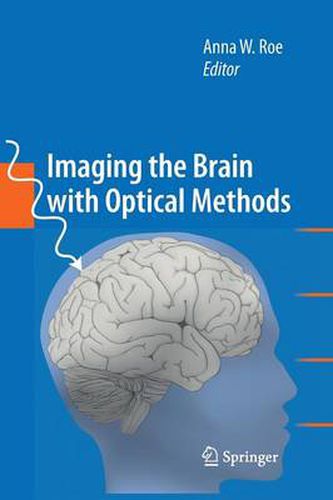Readings Newsletter
Become a Readings Member to make your shopping experience even easier.
Sign in or sign up for free!
You’re not far away from qualifying for FREE standard shipping within Australia
You’ve qualified for FREE standard shipping within Australia
The cart is loading…






This title is printed to order. This book may have been self-published. If so, we cannot guarantee the quality of the content. In the main most books will have gone through the editing process however some may not. We therefore suggest that you be aware of this before ordering this book. If in doubt check either the author or publisher’s details as we are unable to accept any returns unless they are faulty. Please contact us if you have any questions.
Monitoring brain function with light in vivo has become a reality. The technology 33 of detecting and interpreting patterns of reflected light has reached a degree of 34 maturity that now permits high spatial and temporal resolution visualization at both 35 the systems and cellular levels. There now exist several optical imaging methodolo- 36 gies, based on either hemodynamic changes in nervous tissue or neurally induced 37 light scattering changes, that can be used to measure ongoing activity in the brain. 38 These include the techniques of intrinsic signal optical imaging, near-infrared optical 39 imaging, fast optical imaging based on scattered light, optical imaging with voltage 40 sensitive dyes, and two-photon imaging of hemodynamic signals. The purpose of 41 this volume is to capture some of the latest applications of these methodologies to 42 the study of cerebral cortical function. 43 This volume begins with an overview and history of optical imaging and its use 44 in the study of brain function. Several chapters are devoted to the method of intrin- 45 sic signal optical imaging, a method used to record the minute changes in optical 46 absorption due to hemodynamic changes that accompanies cortical activity. Since the 47 detected hemodynamic changes are highly localized, this method has excellent 48 spatial resolution (50-100 m ), a resolution sufficient for visualization of fundamen- 49 tal modules of cerebral cortical function.
$9.00 standard shipping within Australia
FREE standard shipping within Australia for orders over $100.00
Express & International shipping calculated at checkout
This title is printed to order. This book may have been self-published. If so, we cannot guarantee the quality of the content. In the main most books will have gone through the editing process however some may not. We therefore suggest that you be aware of this before ordering this book. If in doubt check either the author or publisher’s details as we are unable to accept any returns unless they are faulty. Please contact us if you have any questions.
Monitoring brain function with light in vivo has become a reality. The technology 33 of detecting and interpreting patterns of reflected light has reached a degree of 34 maturity that now permits high spatial and temporal resolution visualization at both 35 the systems and cellular levels. There now exist several optical imaging methodolo- 36 gies, based on either hemodynamic changes in nervous tissue or neurally induced 37 light scattering changes, that can be used to measure ongoing activity in the brain. 38 These include the techniques of intrinsic signal optical imaging, near-infrared optical 39 imaging, fast optical imaging based on scattered light, optical imaging with voltage 40 sensitive dyes, and two-photon imaging of hemodynamic signals. The purpose of 41 this volume is to capture some of the latest applications of these methodologies to 42 the study of cerebral cortical function. 43 This volume begins with an overview and history of optical imaging and its use 44 in the study of brain function. Several chapters are devoted to the method of intrin- 45 sic signal optical imaging, a method used to record the minute changes in optical 46 absorption due to hemodynamic changes that accompanies cortical activity. Since the 47 detected hemodynamic changes are highly localized, this method has excellent 48 spatial resolution (50-100 m ), a resolution sufficient for visualization of fundamen- 49 tal modules of cerebral cortical function.